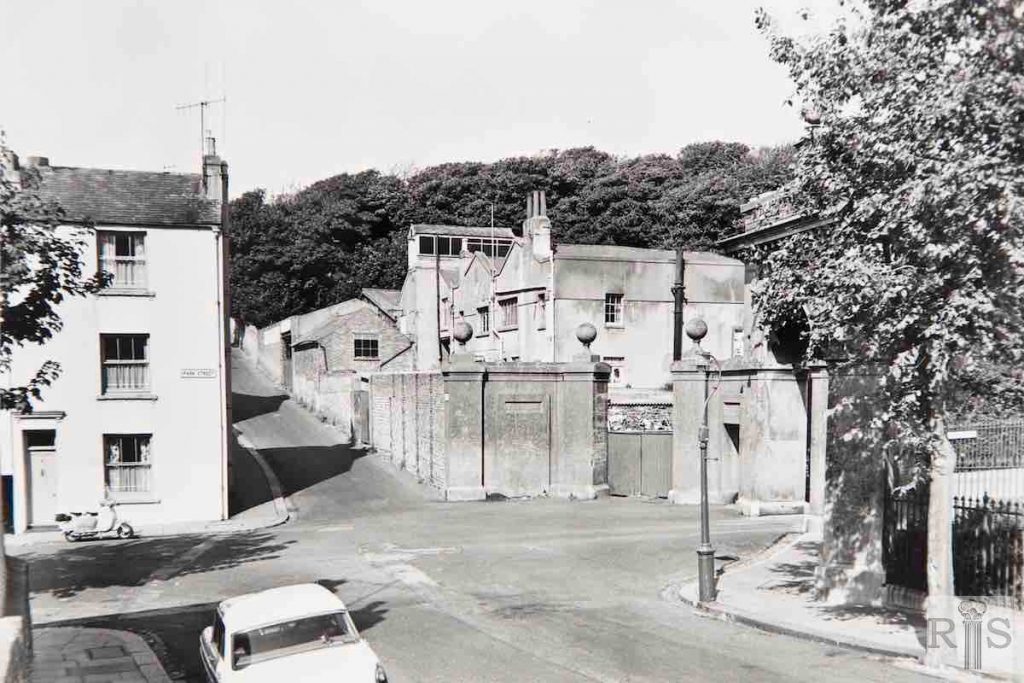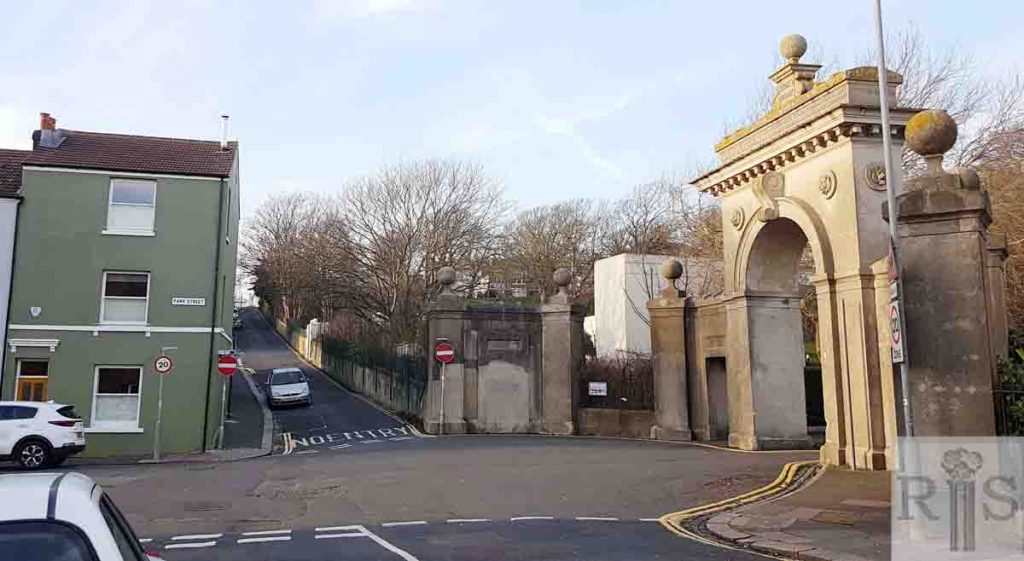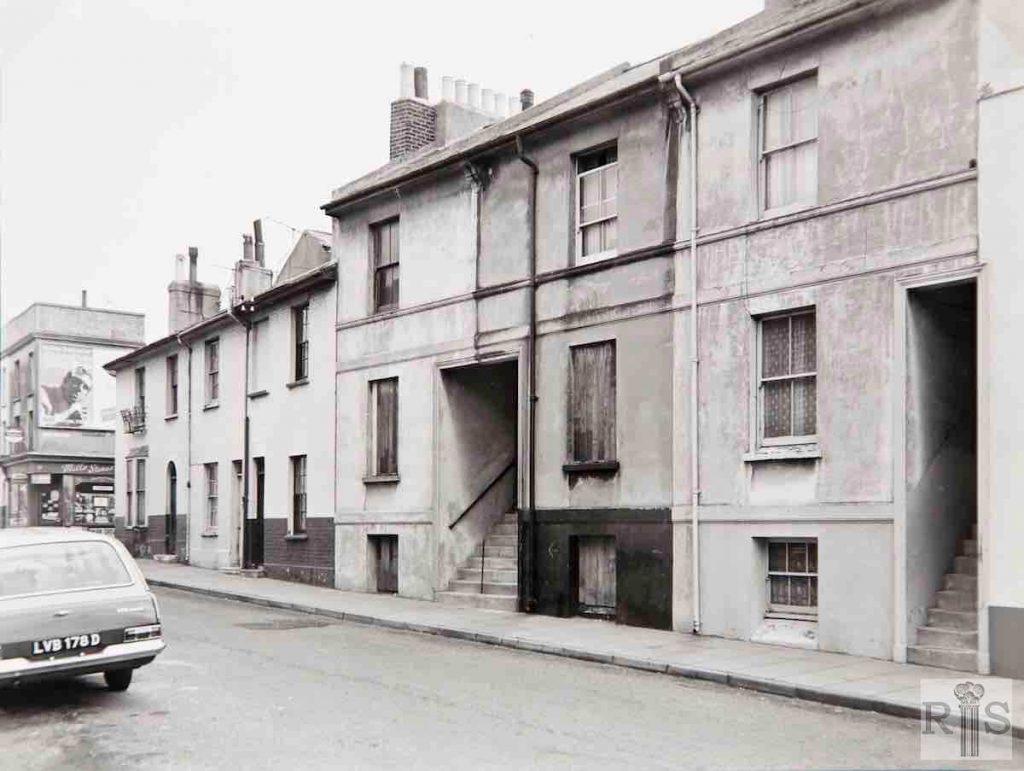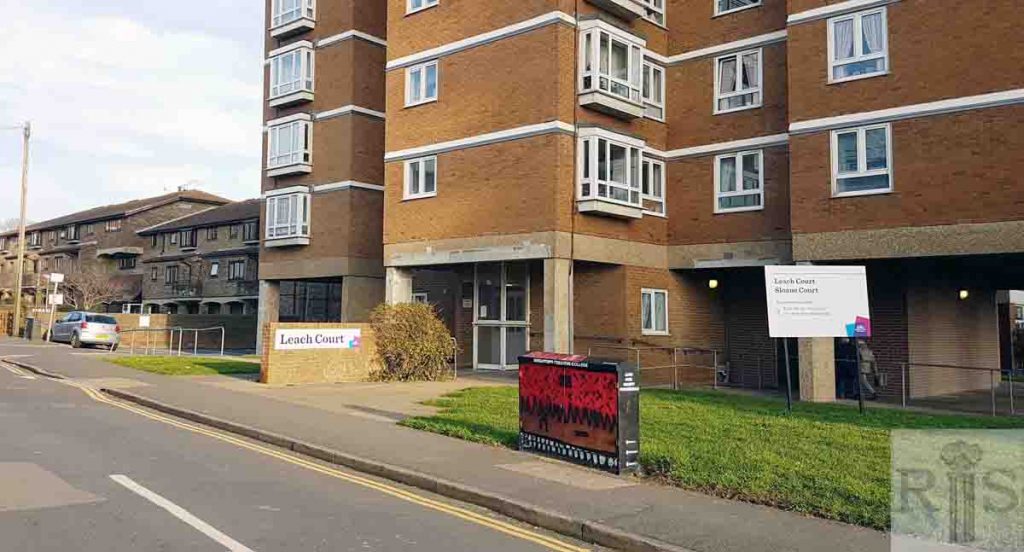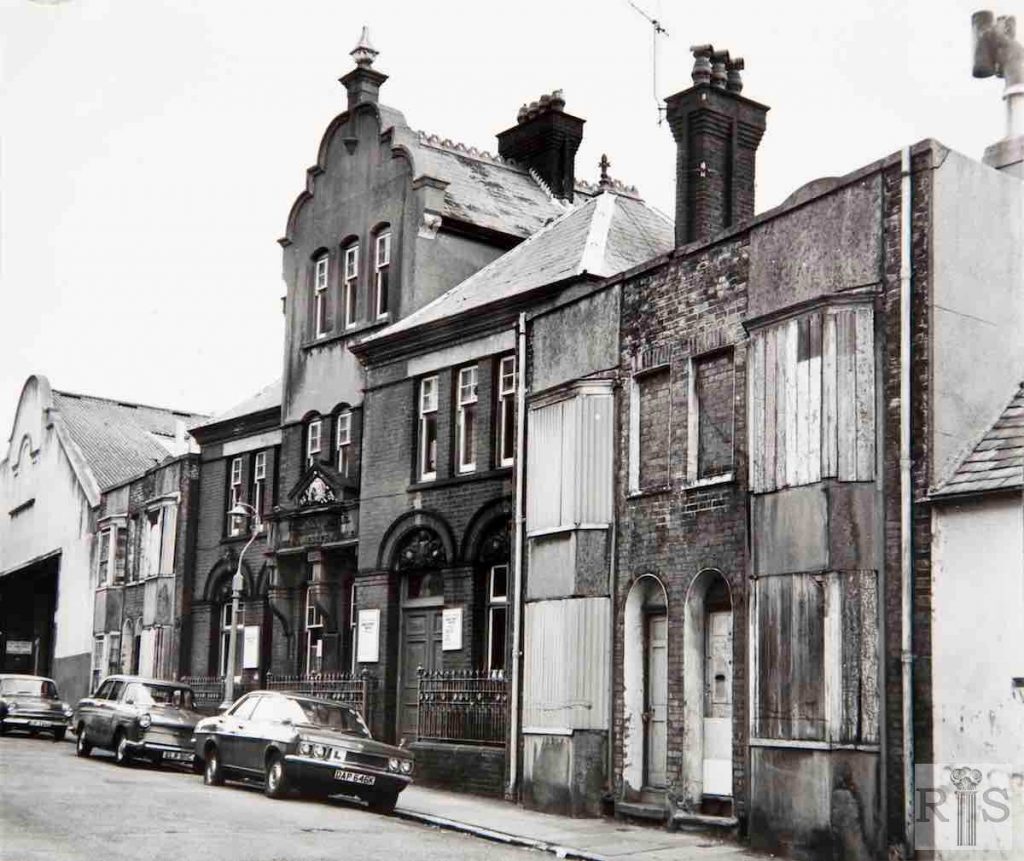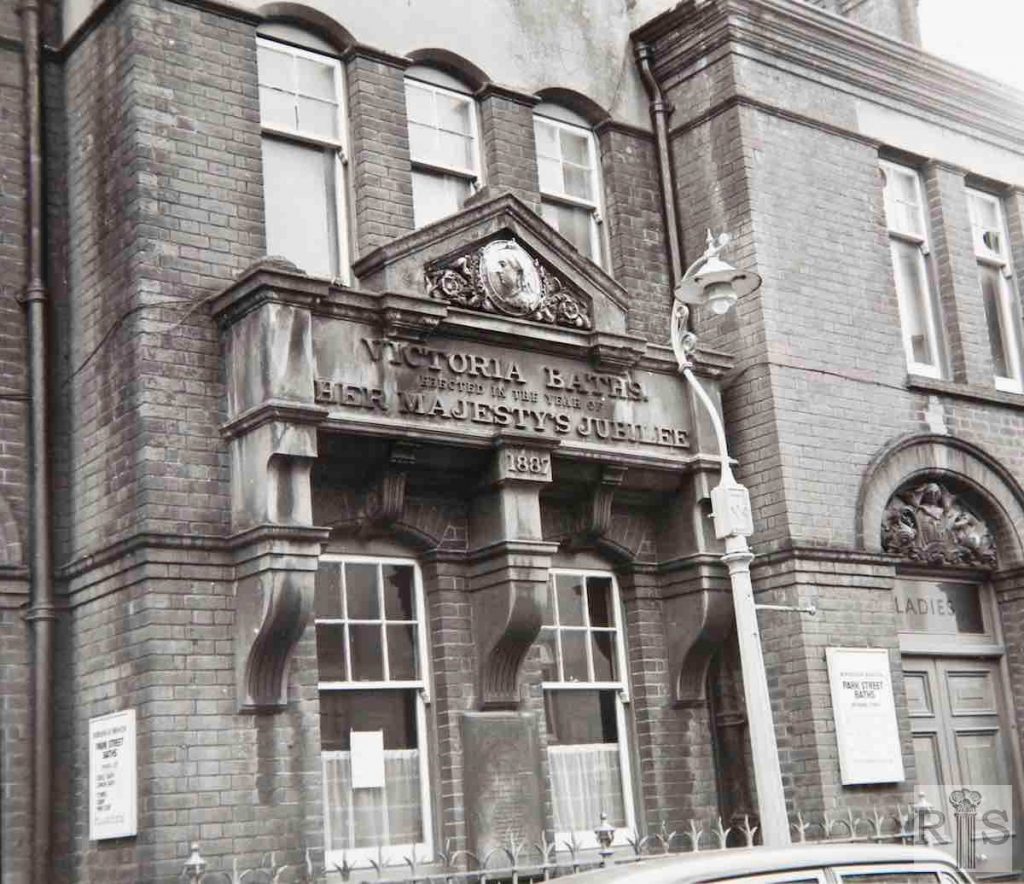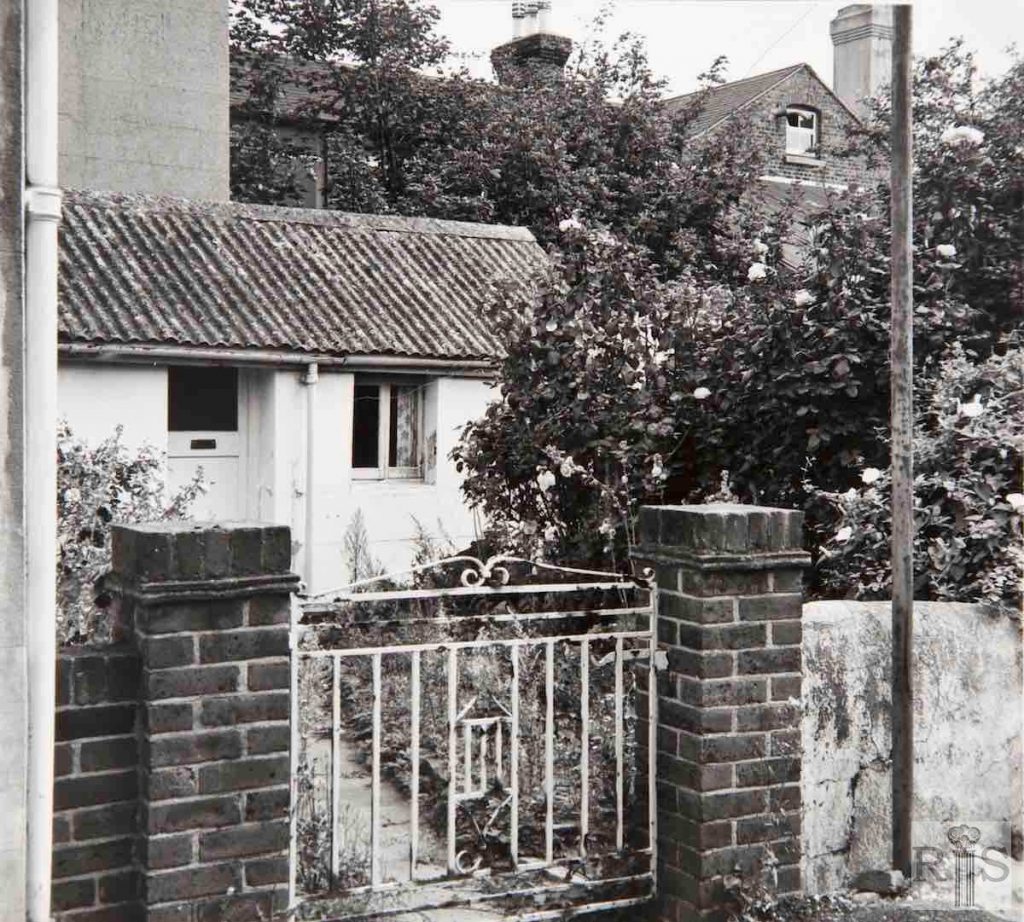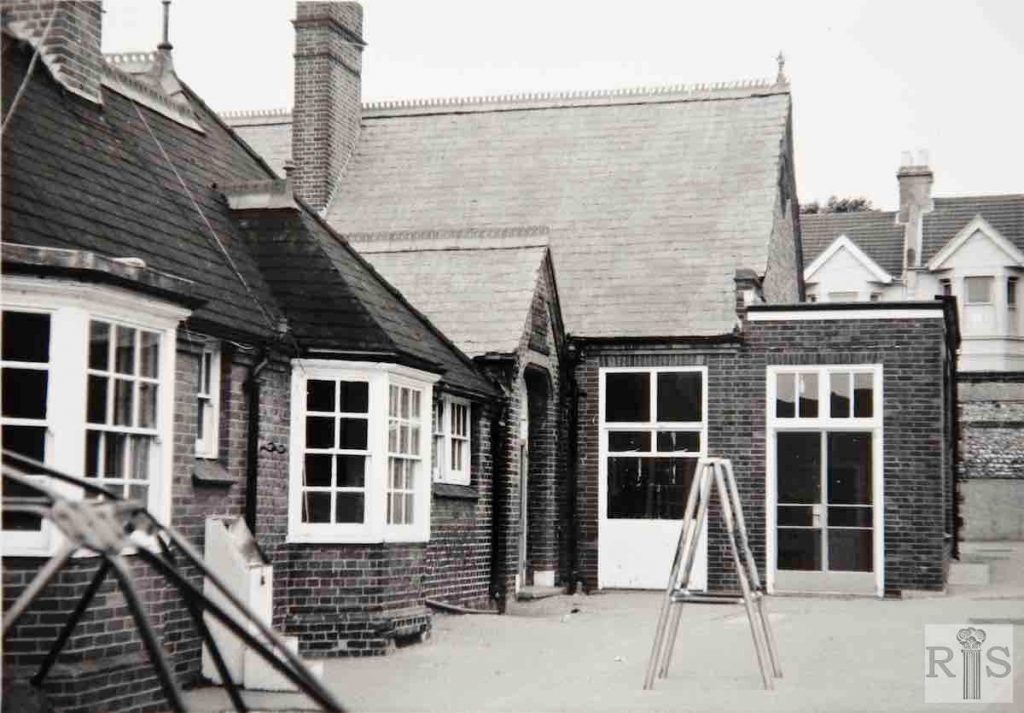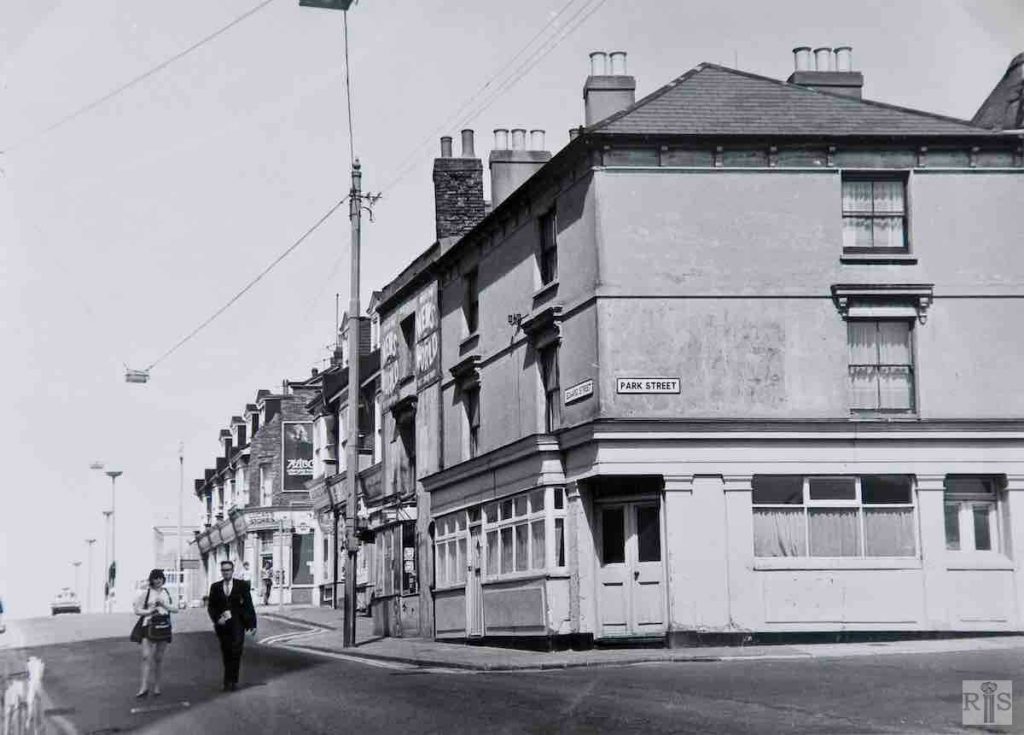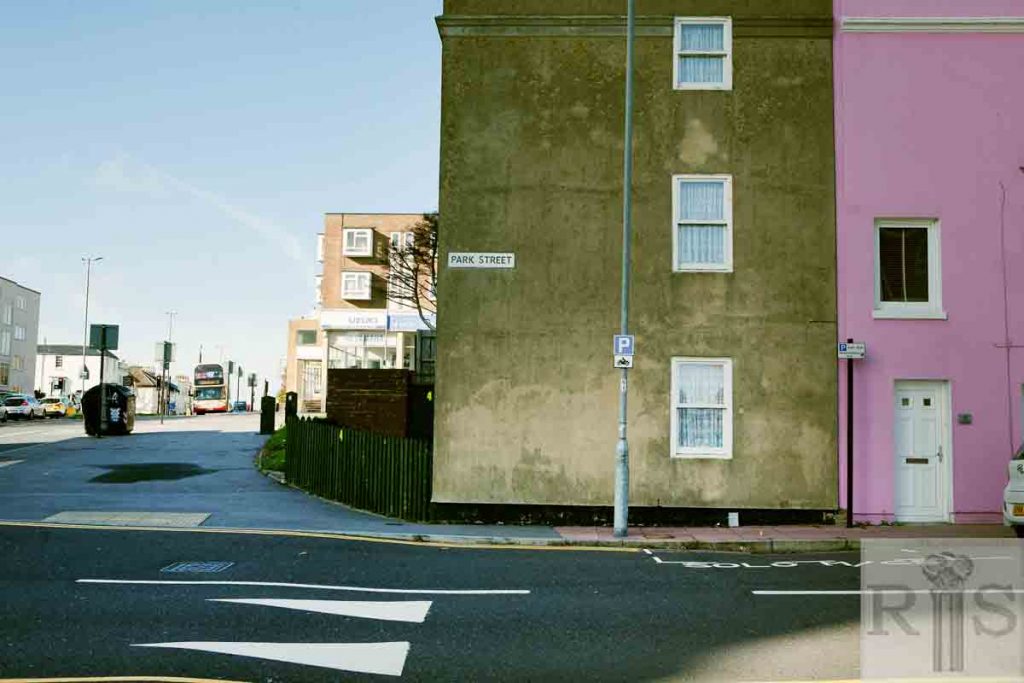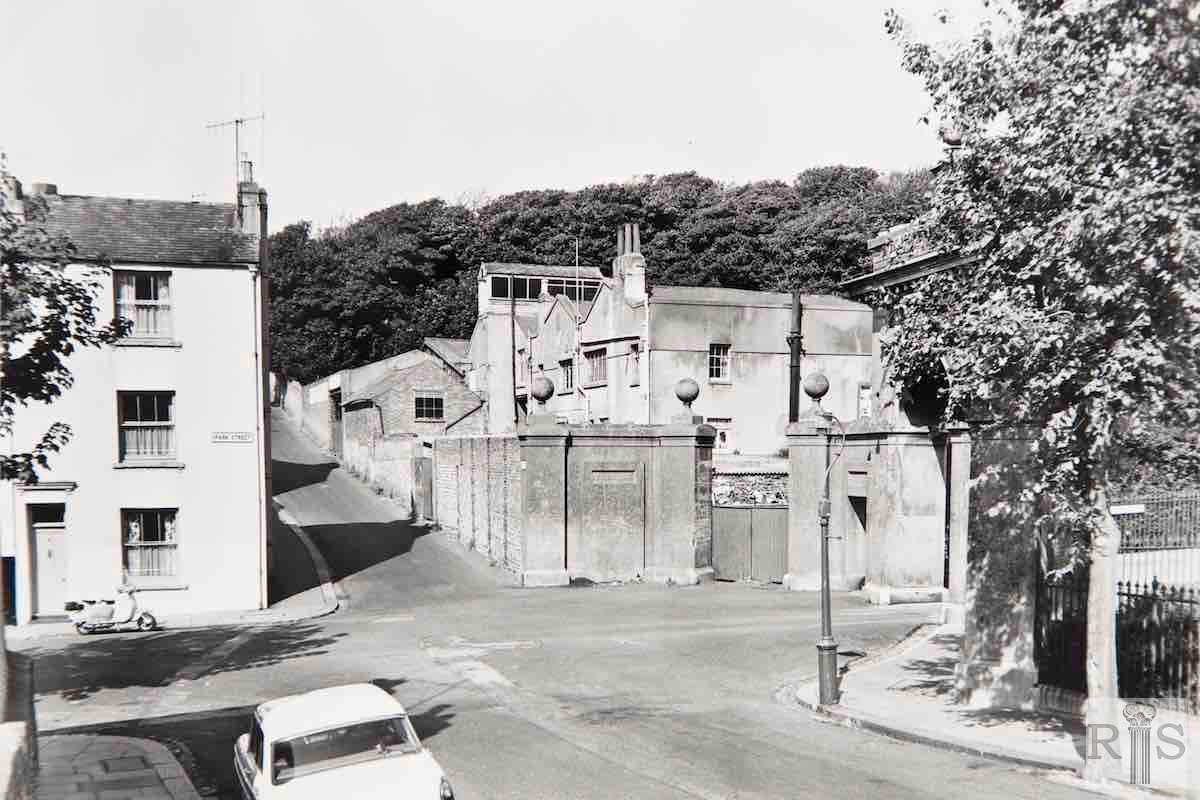
James Gray: Chapel Hill and the rear of The Pump Room and other
buildings of the Royal German Spa seen in dilapidation, 6 September 1964. The Spa was built in 1825 by Friedrich Struve founder of Hooper Struve, and was patronised by members of the court when in Brighton. With the passage of years the Spa changed to a large bottling business and it was then that the factory and outbuildings were added. In 1965 Hooper Struve gave up the premises and their future is in doubt. It is hoped to save the Pump Room, the main building, but the cost of restoring it and the use to which it could be put may be the deciding factors. jgc_22_109
James Gray: Old houses in Park Street, between Sloane Street and Eastern Road, 19 March 1967. Probably built during the 1830s or 1840s, they were demolished soon afterwards. jgc_22_110
2019: Park Street looking north-east from the junction with Eastern Road: all the houses from 1967 have been demolished and the area redeveloped. (Photographer: Jayne Paulin)
James Gray: The Baths seen here were built in Park Street, in 1887, at a reported cost of £5743, and opened in the following year. They were so named because building commenced in Queen Victoria’s Golden Jubilee year. Being located in what was then a poor district, with no baths in the small dwellings, they were extensively used until well into the present century, when prices were 6d for a first class bath, and 3d for a second class, towels provided, with soap at 2d a tablet. As the area improved, the Baths were used less and less, although about 15000 baths were taken in 1978. In 1980, the decision was taken that the baths should be demolished, as no longer necessary, so I had these pictures taken on 24 August 1980, while the buildings were still intact, although the adjoining houses, 41 and 42, to the north and 44 and 45 to the south, had long been disused and boarded up. All these buildings were removed in late 1982. This photograph shows the general view along the east side of Park Street, from the south. jgc_22_116
James Gray: Latterly known as Queens Park Junior School, this was opened on 8 November 1889, to replace the older school in Eastern Road (1826) which was under the auspices of the British and Foreign Bible Society. Together with the adjoining Senior School, it was built and fitted at a total cost of £11300. As some illustration of the density of population in this, then, rather poor area, the accommodation was for 798 children. The building did not quite attain their centenary, being demolished in July 1987, and the area added to the Senior School playground. Date of photographs – July 20 1986. jgc_22_118
James Gray: View of the same buildings [see jgc_24_038 and 039 on Edward Street] from the opposite direction, 1969. These buildings were of much more recent construction than most of this street, dating only from the late 1890s when the slums of Spa Street and Egremont Street were swept away, and Edward Street was slightly widened. In turn, they were demolished in 1972 for road improvements. jgc_24_040
